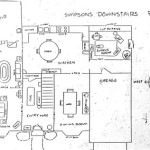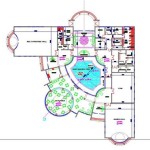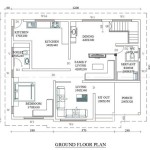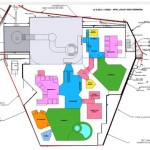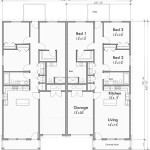Essential Aspects of Good House Plans
When it comes to building or renovating a house, a well-thought-out plan is paramount. A good house plan not only serves as a blueprint for the construction process but also ensures a functional, comfortable, and aesthetically pleasing living space. Here are some essential aspects to consider when selecting or creating a house plan:
1. Space Planning
The flow of your house is determined by its space planning. Consider the number of rooms required, their sizes, and how they connect with each other. Create a layout that promotes easy movement and facilitates daily activities. Open floor plans or designated zones for specific functions can enhance the functionality of the space.
2. Functionality
A good house plan should cater to the specific needs and lifestyle of the occupants. Think about features such as ample storage space, well-equipped kitchens, comfortable living areas, and energy-efficient designs that reduce utility costs. Consider the presence of natural light, cross-ventilation, and outdoor living spaces to enhance the comfort and well-being of the residents.
3. Architectural Style
The architectural style of the house should complement the neighborhood's aesthetics and your personal preferences. Common house designs include contemporary, traditional, craftsman, colonial, and modern farmhouse styles. Choose a style that resonates with your taste and vision for your home's exterior appearance.
4. Floor Plan Options
House plans often offer different floor plan options. Consider the number of stories, the location of the master bedroom, the presence of a basement or attic, and the overall layout. Choose a floor plan that aligns with your lifestyle and preferences. For example, a split-level plan may provide more privacy, while a ranch-style home offers single-story living.
5. Building Materials
The choice of building materials has a significant impact on the durability, energy efficiency, and aesthetics of your home. Common materials include wood, brick, stone, and vinyl siding. Consider the climate, maintenance requirements, and overall design when selecting the materials for your house's exterior and interior.
6. Energy Efficiency
In today's environmentally conscious climate, energy efficiency should be a priority. Look for house plans that incorporate energy-saving features such as high-efficiency windows, proper insulation, and energy-efficient appliances. These features can reduce energy consumption, lower utility bills, and contribute to a more sustainable living environment.
7. Curb Appeal
The exterior design of your house contributes to its curb appeal and overall aesthetic impact. Consider the roofline, window styles, exterior finishes, and landscaping to create a home that is visually appealing and inviting. A well-designed exterior enhances the neighborhood's beauty and adds value to your property.
Choosing the right house plan is a critical step in the homebuilding process. By carefully considering the essential aspects discussed above, you can create a home that meets your needs, complements your lifestyle, and provides a comfortable and enjoyable living space for you and your family.
House Plans How To Design Your Home Plan
What Makes A Good Floor Plan
House Plans Home Floor Architecturalhouseplans Com
What Are The Key Characteristics Of A Good Floor Plan House Plans In N Design Home Elevation Front
Need To Two Sinks Tub And Larger Closet In Master Bath But Good Floor Plan Otherwise Craftsman House Plans Cottage
Floor Plans Learn How To Design And Plan
Top 15 House Plans Plus Their Costs And Pros Cons Of Each Design
Good Floor Plan Bad Plans Bungalow New House
Unique Lake House Plans W Curved Wall Filled With Windows
Northwest Style Cottage Plan 6359 Gordon

